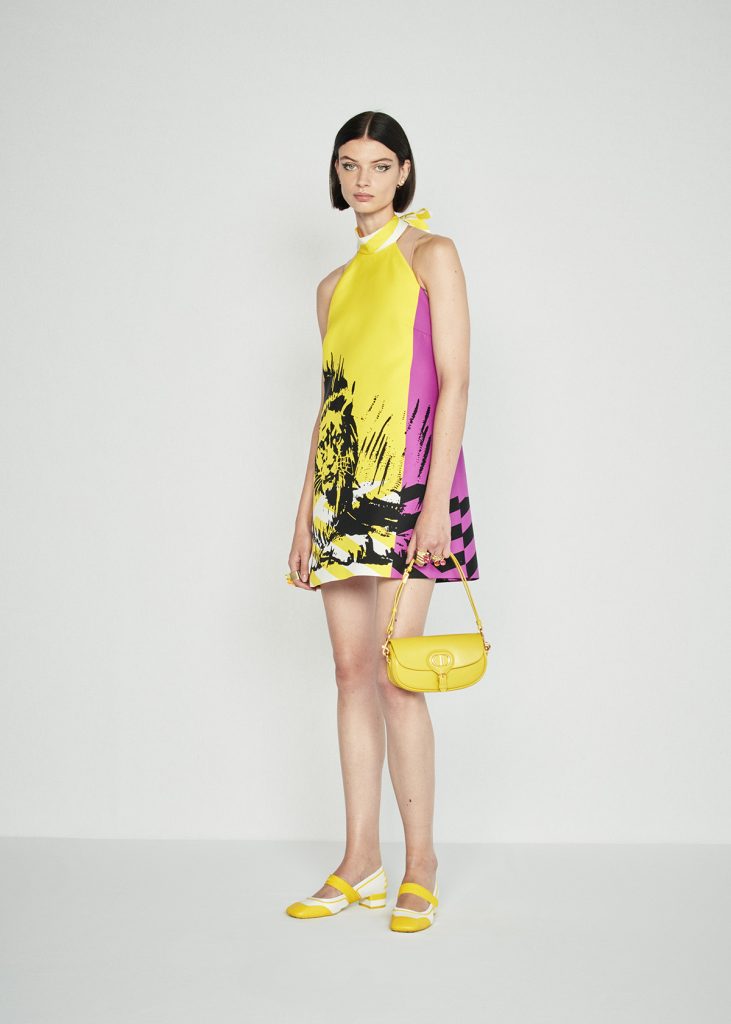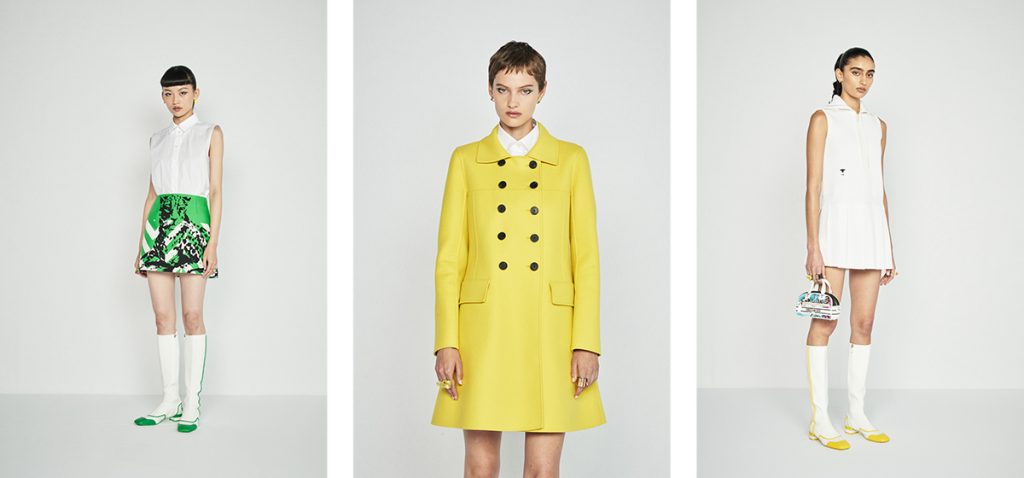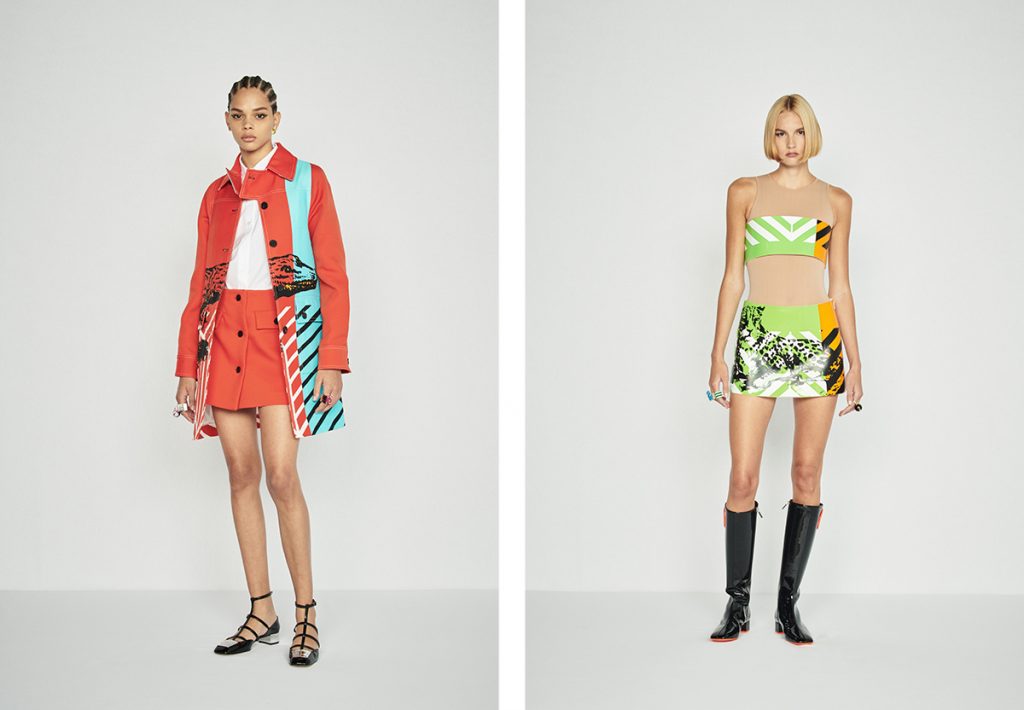Maria Grazia Chiuri continues her study in the Maison’s archives, exploring that long period of Dior history that saw Marc Bohan, the creative director who succeeded Yves Saint Laurent, plagued by a bad posthumous depression in military service for the Algerian War.
Bohan brought the brand back into the tradition of its founder, obtaining great recognition from fashion magazines thanks to that Slim Look of 1961 which he rewrote in l’Aurore on January 27, 1961 “It makes a complete change in fashion, just as The New Look did in 1947”.
Maria Grazia Chiuri is connected to that first part of the sixties by drawing up a sort of elements, which in this post-pandemic moment draws up a sort of reference lexicon, starting from the graphic effects to materialize in color blocks with a Bohanian aesthetic taste. Yellow, green, red as precise colors to build geometries while marine, orange and framboise to imagine summer atmospheres.

A palette that is found in the set up of the fashion show where the artist Anna Paparatti, historical companion of gallery owner Fabio Sargentini, and great animator of the Roman cultural scene since the 60s, recreates in a sort of “Great Game” bringing playful subjects and mandalas that they reflect that precise design direction of the collection.
The small jackets are screwed up again by the boxy fit, and the coats are essential, while the skirts, Bermudas and shorts and dresses all become pieces of a variable combination for outerwear.

Maria Grazia Chiuri’s work is to stay away from stereotypes that the fashion narrative sometimes creates subjugated by commercial power, and to deliver without misunderstanding a current female story, the same one that was cleared by Mar Bohan to bring the Maison back into vogue, with that strong aesthetic taste recognized by everyone in the world with the name of change.

